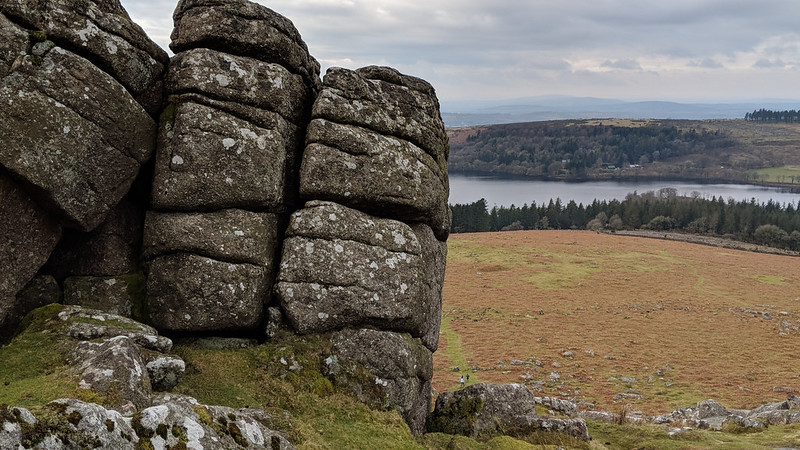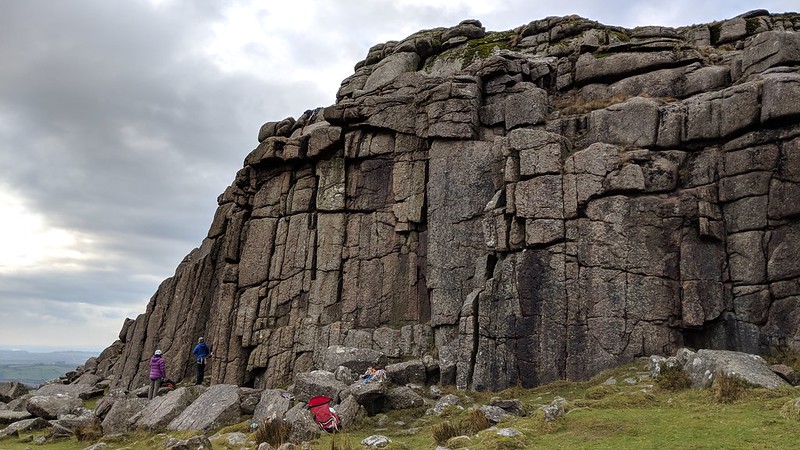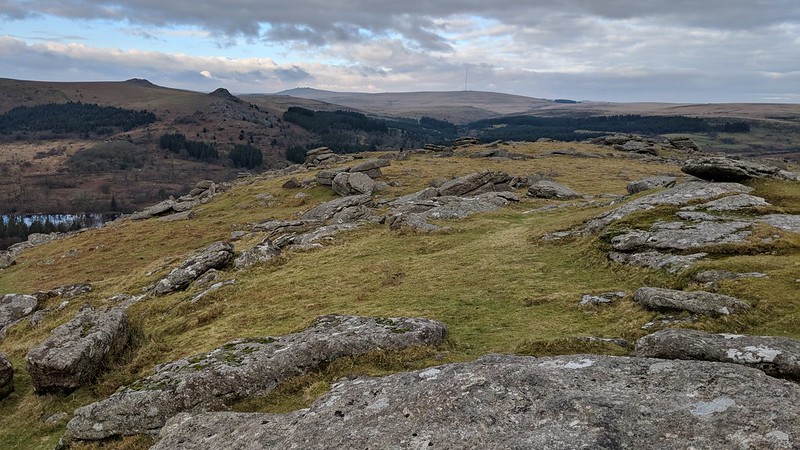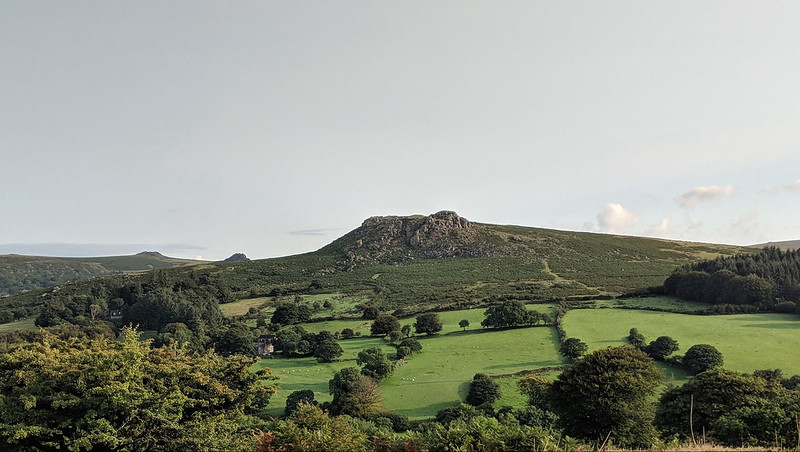TORS OF DARTMOOR
a database of both lesser- & well-known rocks and outcrops
Sheeps TorSheepstor, Sheep's Tor, Sitelestorra, Schetelestorre, Schitelestor, Sytelestorre, Shistor, Shepystor, Scitelstor, Skyteletor, Schytlestorre, Scitestorr, Shittestor, Shipstor, Shetelstor, Shepstor, Shippistor, Shittistor, Shittes Tor, Schittes Tor  This stupendous tor, situated high above the village of the same name, is a well-known landmark near Burrator Reservoir, and is renowned for its rock climbing and bouldering and its stunning views across south-west Dartmoor. Once again, we find that Henry Edmund Carrington in 1828 is one of the first to offer a description of the site he writes "Sheepstor near Meavy is very romantic and being loftily situated on the western edge of the moorland commands a very diversified prospect. It rushes into the waste like a bold promontory and though on its slopes huge fragments of granite are scattered in chaotical confusion, its summit is partly clothed with smooth green turf." The author is particularly impressed by the appearance of the rocks "The eastern extremity of the tor is a perpendicular cliff which, being seamed in a remarkable manner bears some resemblance to the basaltic columns of the island of Staffa." We also learn of a certain legend of the tor, as a place that is "celebrated in many a rustic story as being frequented by the pixies or Devonshire fairies and a cave is there shewn which these fabulous little beings are said to make their peculiar haunt." This is the 'Pixies Cave', also spelt 'Piskies', to the south of the tor where the rocks form a cave that is possible to climb inside and be hidden out of sight.  Other commentators have also been impressed by the tor's stature. For example, Crossing describes Sheeps as "One of the largest of the Dartmoor Tors" and Hugh Breton (p.45, part 2) helpfully describes the climb to the summit; "The ascent on the north side is very rough, on the west stiff but pleasant; at the southern extremity, none but the foolhardy, would attempt to scale the precipitous rocks. On the east side is a gentle slope very easily ascended even by the aged and infirm." The south face drops vertically to the ground and just as Carrington observed nearly two hundred years ago masses of clitter are strewn in all directions - one can only imagine the enormity of what is still today a truly spectacular, huge and impressive granite outcrop.  It is possible that Sheeps Tor has more known names than any other tor on the moor; Hemery, in High Dartmoor, lists several including - Sitelestorra (in 1168), Schetelestorre (in 1181), Schitelestor (in 1219, 1302-3), Sytelestorre (in 1422), Shistor (in 1547), Shepystor (in 1574, Scitelstor (in 1244), Skyteletor (in 1262), Schytlestorre (in 1375), Scitestorr (in 1408), Shittestor (in 1474), Shipstor (in 1607), Shetelstor and Shepstor (survey), and Shippistor and Shittistor (in 1691).  Nearby, to the south-east of the tor, is the Yellowmead Fourfold Circle, originally built in the Bronze Age, its use remains unclear, but its appearance is quite different to that of other more typical cairn circles, in so much that this one appears to spiral. Jeremy Butler (1994) explains that its present lay out as fourfold circles, is entirely due to the Reverend Hugh Breton and his assistants who in 1921 re-erected all but three of the stones still standing. The site was cleared of vegetation in summer 2022. A small double stone row can also be seen stretching to the south of the circle, but this abruptly halts when it meets a leat. It is unclear if it originally continued beyond.
| ||||||||||||||||||||||||||||||